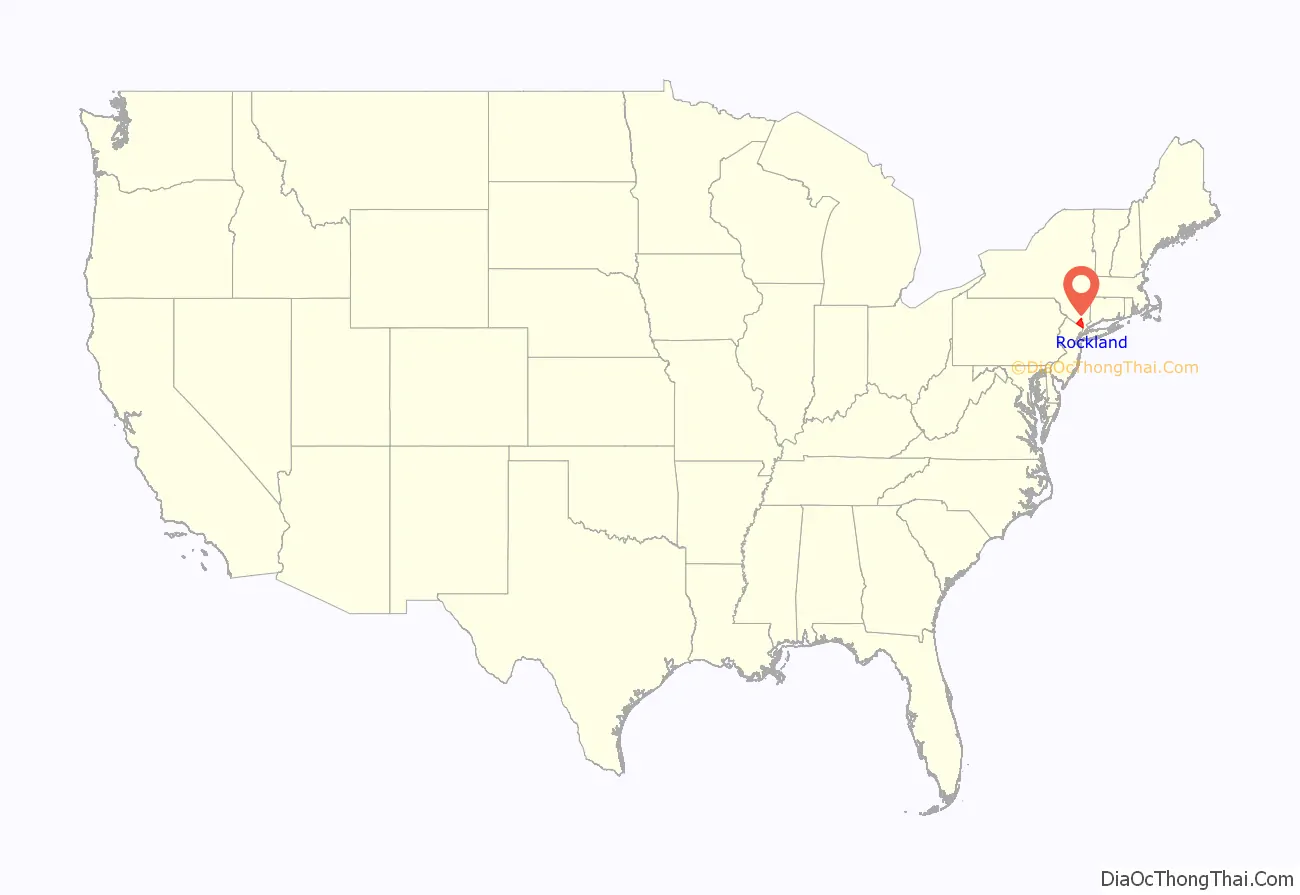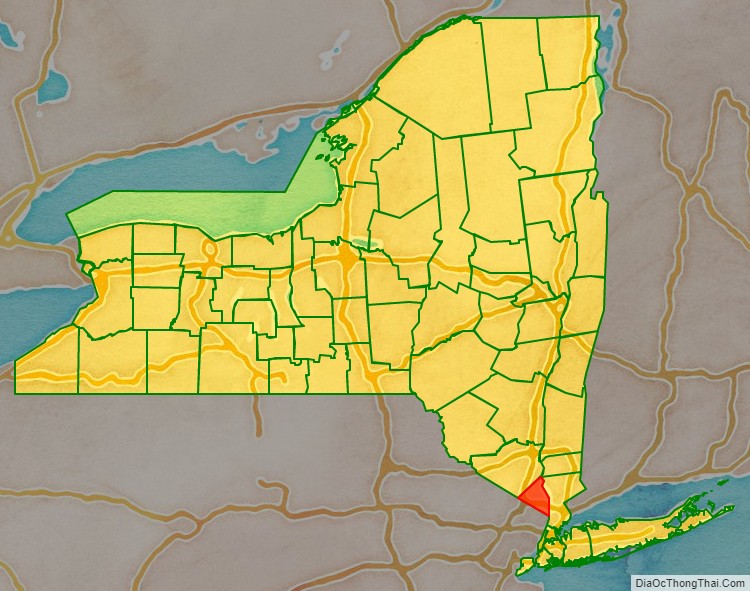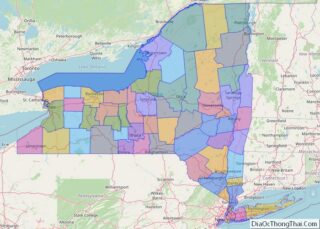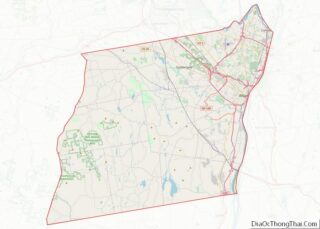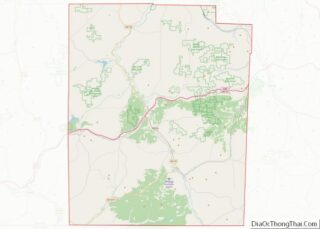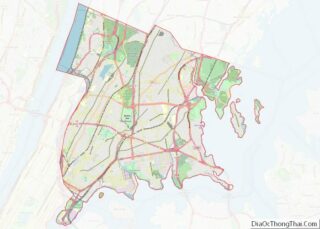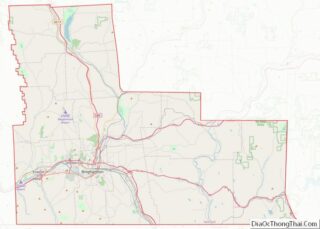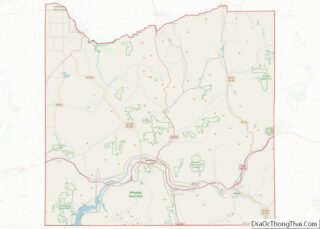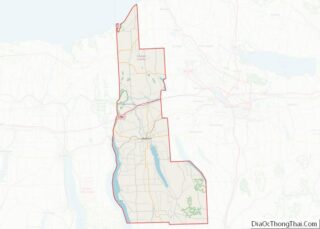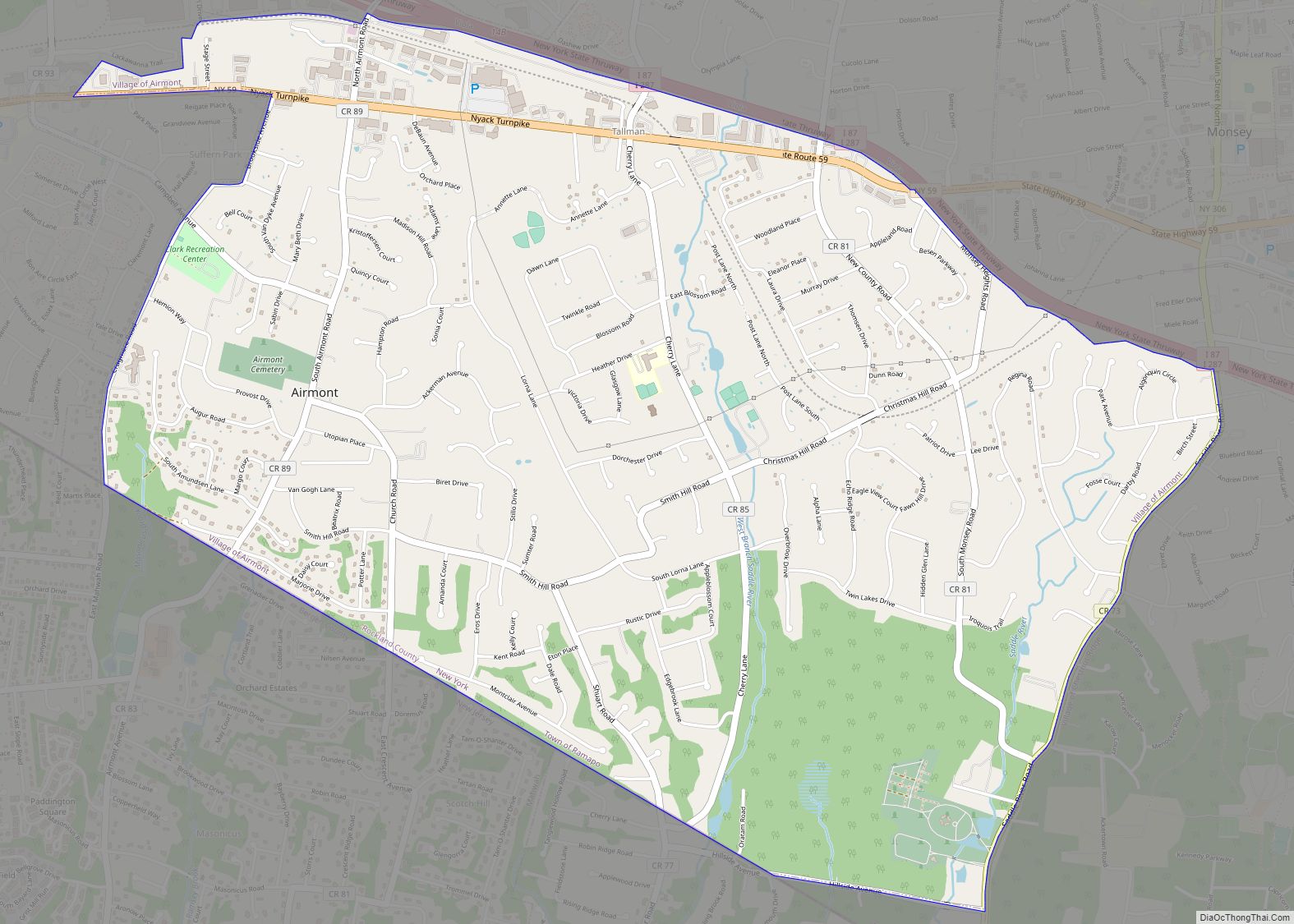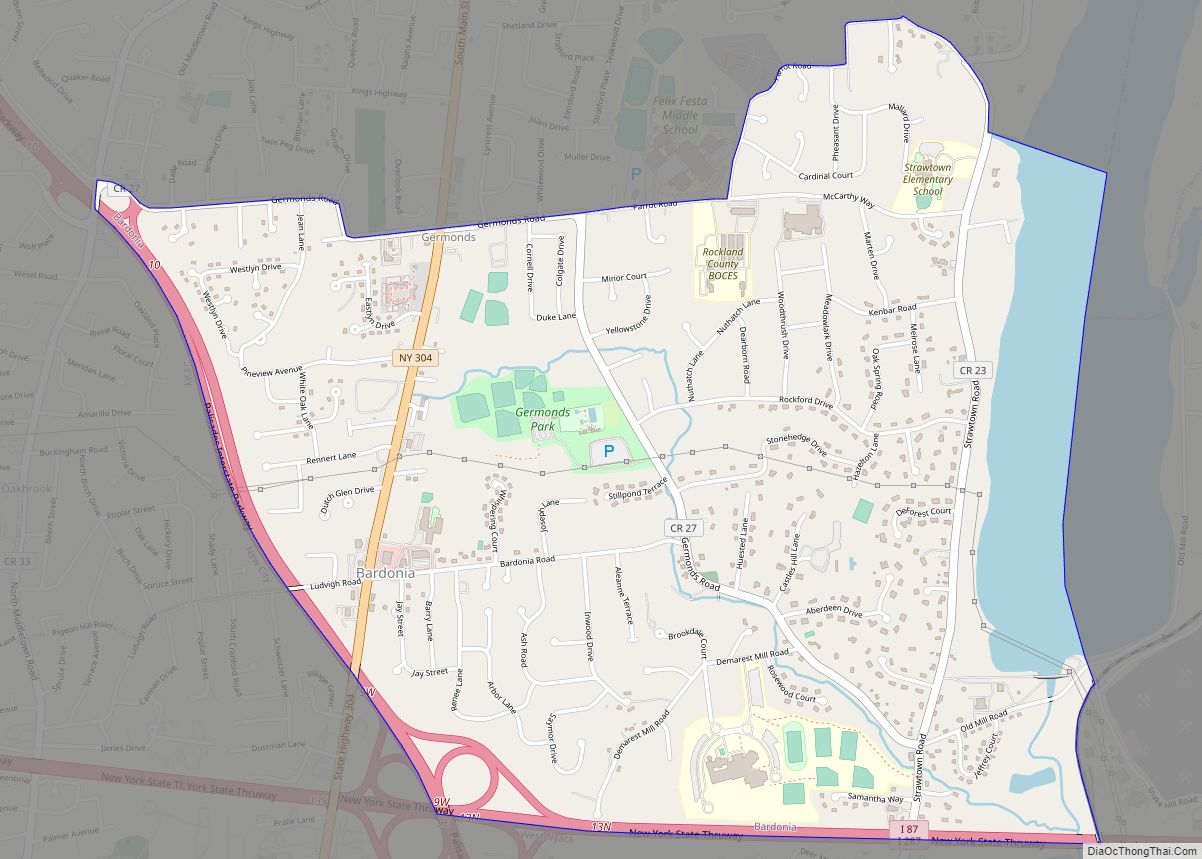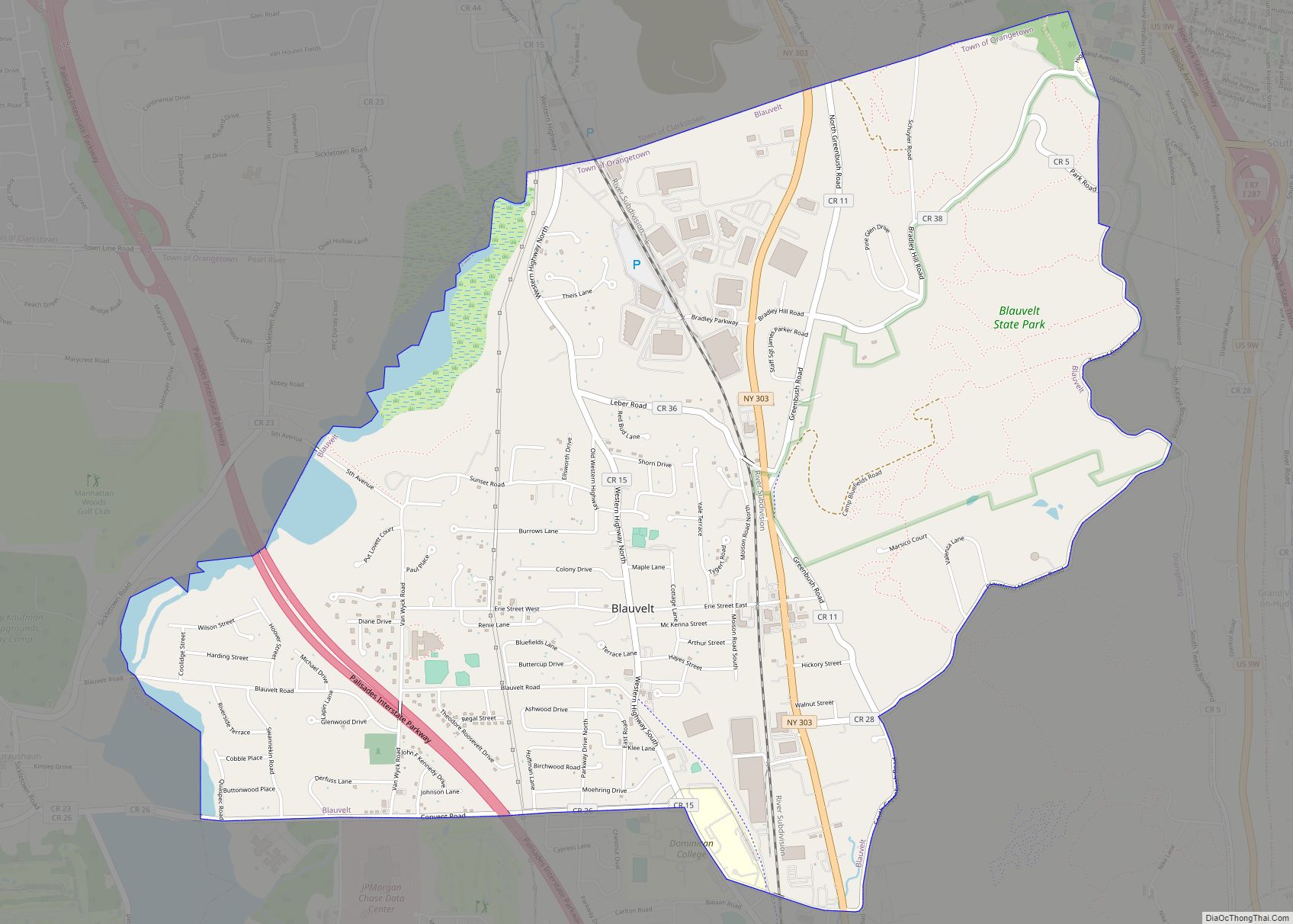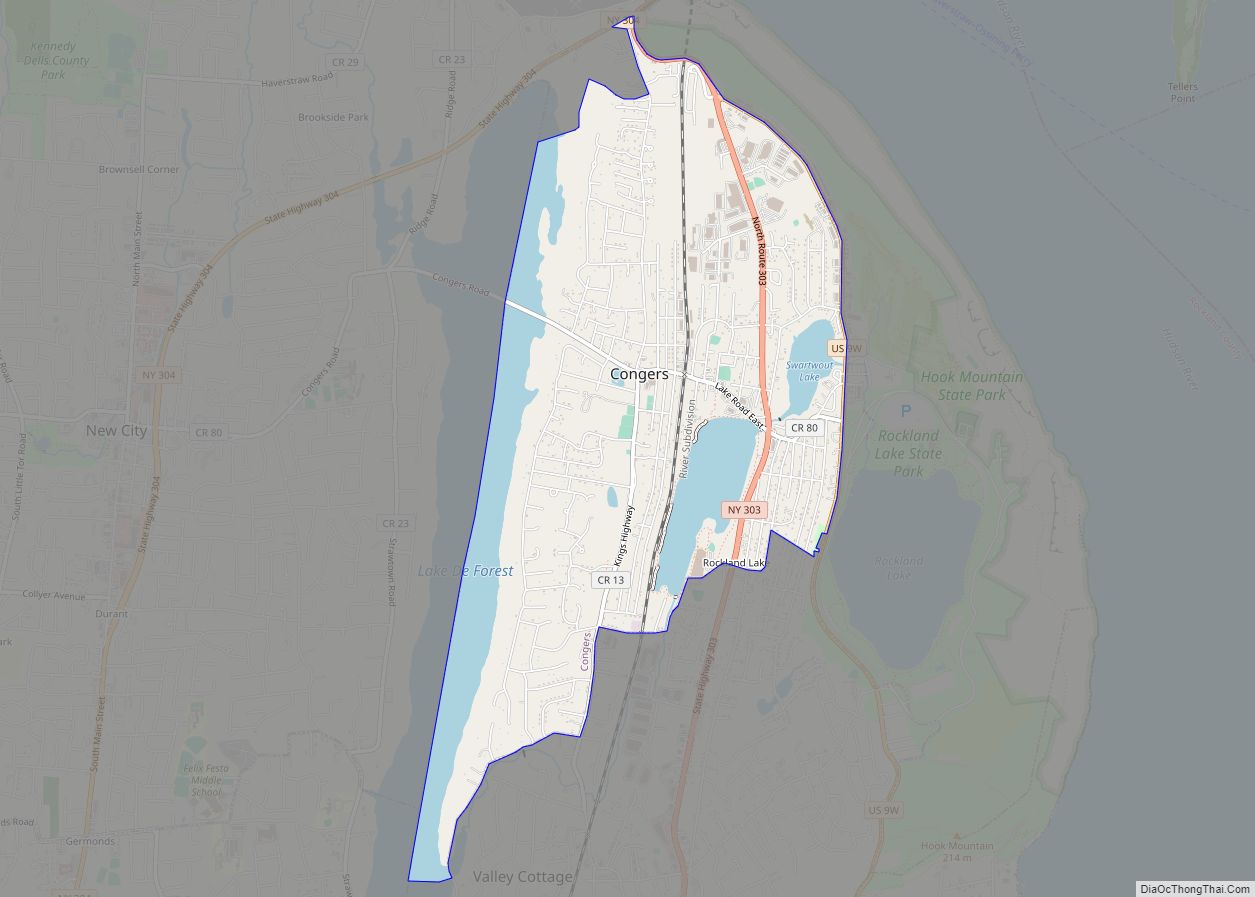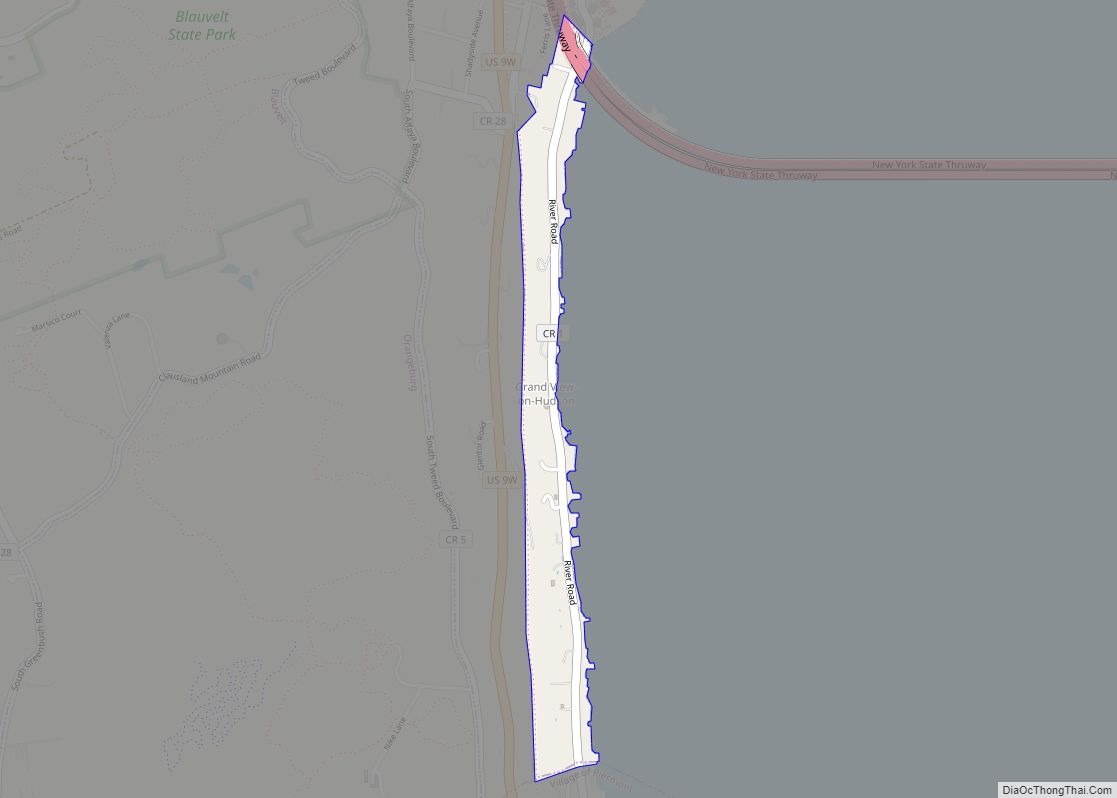| Name: | Rockland County |
|---|---|
| FIPS code: | 36-087 |
| State: | New York |
| Founded: | 1798 |
| Named for: | Its rocky terrain |
| Seat: | New City |
| Total Area: | 199.34 sq mi (516.3 km²) |
| Land Area: | 173.55 sq mi (449.5 km²) |
| Total Population: | 338,329 |
| Time zone: | UTC−5 (Eastern) |
| Summer Time Zone (DST): | UTC−4 (EDT) |
| Website: | www.rocklandgov.com |
Rockland County location map. Where is Rockland County?
History
The area that became Rockland County was originally inhabited by Algonquian-speaking Native Americans, including Munsees, or Lenni Lenape. The Tappan tribe had a particularly noteworthy presence in the area, extending from present-day Nyack, south to Sparkill and Tappan, down the Hackensack River valley through present-day Bergen County, NJ, and also along the Palisades and Hudson shore all the way down to present-day Edgewater, NJ.
In 1609, Henry Hudson was the first major Dutch explorer to arrive in the area. Hudson, thinking he had found the legendary “Northwest Passage”, sailed on the Half Moon up the river that would one day bear his name, and sailing through the area that is now Haverstraw before exploring north towards what is now Albany.
In the years before 1664 when the area was formally a Dutch colony called New Netherland, present-day Rockland did not have formal European settlements. However, individuals did explore the area and made transactions with Tappan tribe for land with the idea that it could have future use. For example, in 1640, Dutch Captain David Pietersz. de Vries purchased from natives the area where the Sparkill Creek flows into the Hudson River.
In 1664, the British Crown assumed control of New Netherland from the Dutch. In June 1664, the Berkeley-Carteret land grant established the colony of New Jersey, dividing present-day Rockland and Bergen Counties into separate political areas. The northern border of New Jersey was placed in a straight line from the Delaware River at present-day Port Jervis to the Hudson River at 41 degrees even North latitude, where the Palisades Cliffs pause and give way to Sneden’s Landing in Orangetown. The state line remains there to this day, though various disagreements along the exact border were had over the years.
In the 1670s, permanent Dutch settlers began to arrive with land grants, starting with the Tappan area. These settlers were eager to escape “city life”, moving from Manhattan to Rockland. A number of unique, Dutch-style red sandstone houses still stand, and many place names in the county reveal their Dutch origin.
In 1683, when the Duke of York (who became King James II of England) established the first 12 counties of New York, present-day Rockland County was part of Orange County, known then as “Orange County South of the Mountains”. Orangetown was created at the same time under a royal grant, originally encompassing all of modern Rockland County. Around this time, as the English began to colonize Nyack and Tappan, the Native Americans began to leave Rockland in search of undisturbed land further north.
The natural barrier of the Ramapo Mountains and the size of the county made carrying out governmental activities difficult. At one point, two governments were active, one on each side of the Ramapo Mountains, so Rockland split off from Orange in 1798 to form its own county. That same year, the county seat was transferred from Tappan to New City, where a new courthouse was built.
Haverstraw was separated from Orangetown in 1719, and became a town in 1788; it included the present-day Clarkstown, Ramapo, and Stony Point. Clarkstown and Ramapo became towns in 1791, followed by Stony Point in 1865.
During the American Revolution, when control of the Hudson River was viewed by the British as strategic to dominating the American territories, Rockland had skirmishes at Haverstraw, Nyack, and Piermont, and significant military engagements at the Battle of Stony Point, where General “Mad” Anthony Wayne earned his nickname. George Washington had headquarters for a time at John Suffern’s tavern, the later site of the village of Suffern. British Major John André met with American traitor Benedict Arnold near Stony Point to buy the plans for the fortifications at West Point. André was captured with the plans in Tarrytown on his way back to the British lines; he was brought to Tappan for trial in the Tappan church, found guilty, hanged, and buried nearby. Still another important chapter in the story of the Revolution was written on May 5, 1783, when General Washington received Sir Guy Carleton at the DeWint House, where they discussed terms of a peace treaty. Two days later, Washington visited Sir Guy aboard a British war vessel H.M.S Perseverance. On this day, the king’s navy fired its first salute to the flag of the United States of America.
In the decades following the Revolution, Rockland became popular for its stone and bricks. Many buildings in New York City were built with bricks made in Rockland. These products, however, required quarrying in land that many later believed should be set aside as a preserve. Many unsuccessful efforts were made to turn much of the Hudson Highlands on the northern tip of the county into a forest preserve. Union Pacific Railroad president E. H. Harriman, though, donated land and large sums of money for the purchase of properties in the area of Bear Mountain. Bear Mountain/Harriman State Park became a reality in 1910 when Harriman’s widow donated his lands to the state, and by 1914, more than an estimated one million people a year were coming to the park. After World War I, Rockland County became the most important sausage-making hub in New York.
In 1911, Letchworth Village, an institution for the mentally disabled opened in Rockland County near Thiells. The institution gained national infamy in 1972, when an investigation by Geraldo Rivera revealed the patients there to having been housed in neglectful conditions. Letchworth closed in 1996.
Rockland remained semirural until the 1950s, when the Palisades Interstate Parkway, Tappan Zee Bridge, and other major arteries were built. In the decades that followed, the county became a maturely developed suburb of New York City. As people moved up from the five boroughs (particularly the Bronx in the early years) the population flourished from 89,276 in 1950 to 338,329 in 2020.
Rockland County Road Map
Geography
Rockland County lies just north of the New Jersey-New York border, west of Westchester County (across the Hudson River), and south of Orange County. Its east border is formed by the Tappan Zee portion of the Hudson River. The county’s terrain ranges from 1,283′ (391m) ASL on Rockhouse Mountain (northwest of Lake Welch) to approaching sea level along the Hudson River. According to the US Census Bureau, the county has a total area of 199.34 sq mi (516 km), of which 173.55 sq mi (449.49 km) are land and 25.79 sqmi (66.80 km) (13%) are covered by water. It is the state’s smallest county outside the five boroughs of New York City.
About 30% of Rockland County is devoted to parkland, belonging to either the five towns, incorporated villages, the state, or the county. These parks provide walking and hiking trails, ballfields, dog runs, historic sites, ponds, streams, salt marshes, and equestrian trails. Some popular state parks include Bear Mountain State Park on the northernmost tip of the county, Harriman State Park, also along the county’s northern boundary, and Nyack Beach State Park along the Hudson River, with trails connecting to Rockland Lake State Park. The county hosts numerous public and private golf courses, with the towns of Orangetown, Ramapo, Stony Point, and Haverstraw all operating public golf courses within their towns. The Palisades Interstate Park Commission operates two golf courses in Rockland Lake State Park. Notable private courses in the county include Paramount Country Club, Manhattan Woods Golf Course (designed by PGA great Gary Player), and Rockland Country Club (Sparkill).
Adjacent counties
- Orange County – northwest
- Putnam County – northeast
- Westchester County – east
- Passaic County, New Jersey – west
- Bergen County, New Jersey – south
Lakes
- Breakneck Pond
- Congers Lake
- Cranberry Pond
- Lake DeForest
- Lake Sebago
- Lake Tappan (part)
- Lake Wanoksink
- Pine Meadow Lake
- Potake Lake (part)
- Rockland Lake
- Second Reservoir
- Lake Welch
- Tappan Zee (along east border)
- Third Reservoir
- Antrim Lake
